Abstract
The stimulation of a draining lymph node by the injection of a substance possessing adjuvanticity leads to a marked increase in the influx of lymphocytes into the node. The influx of cells has been followed in experimental mice injected intravenously with 51Cr-labelled normal mesenteric lymph node cells. The increase in size of the draining node is not due to an increased blood volume.
Full text
PDF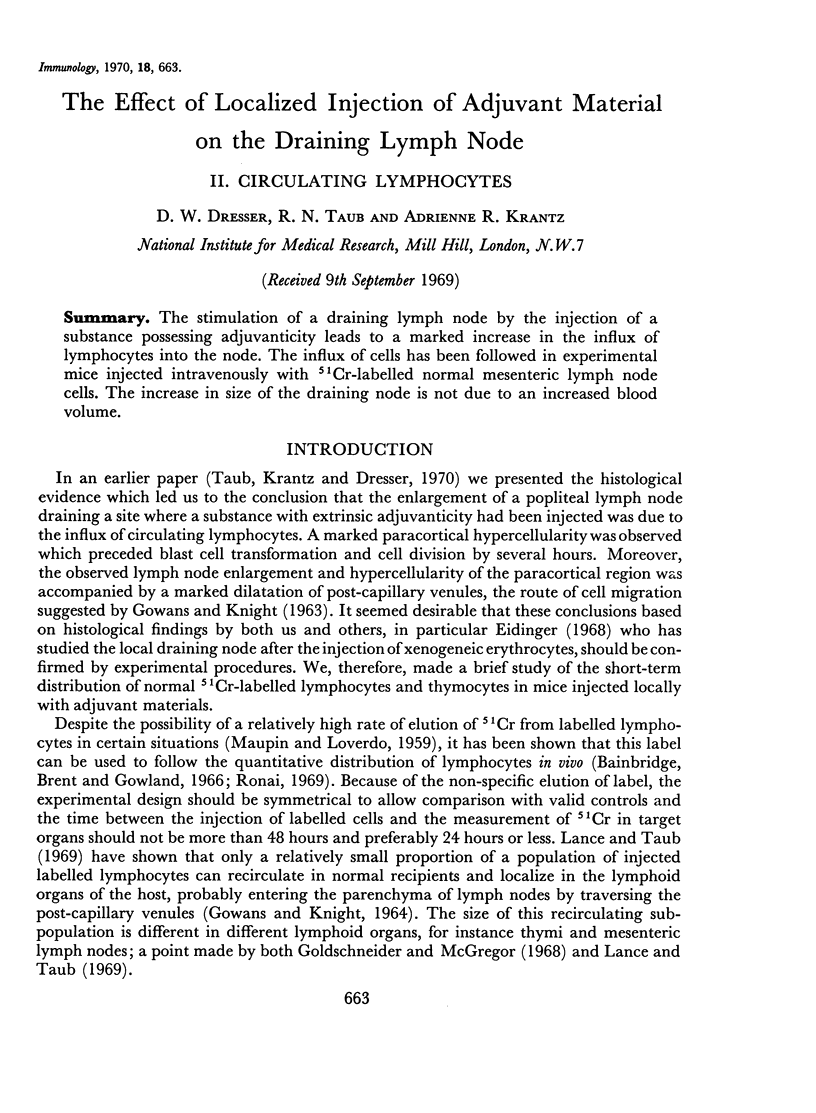
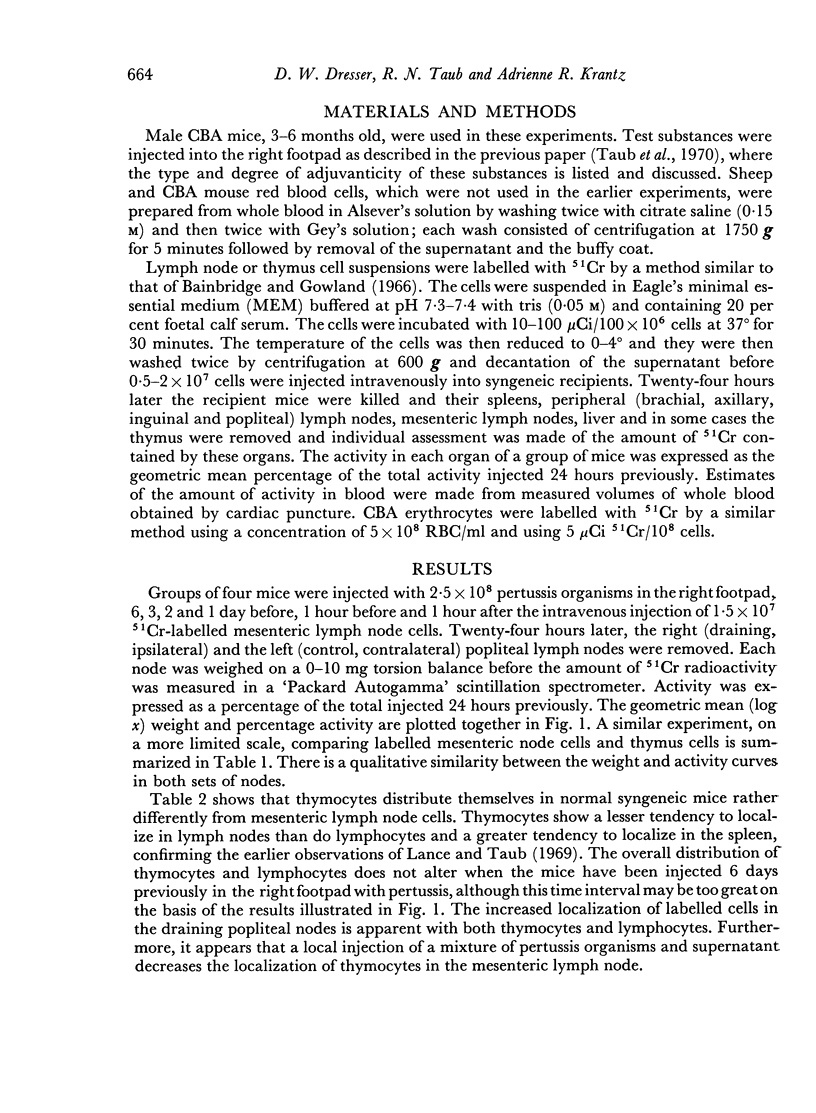
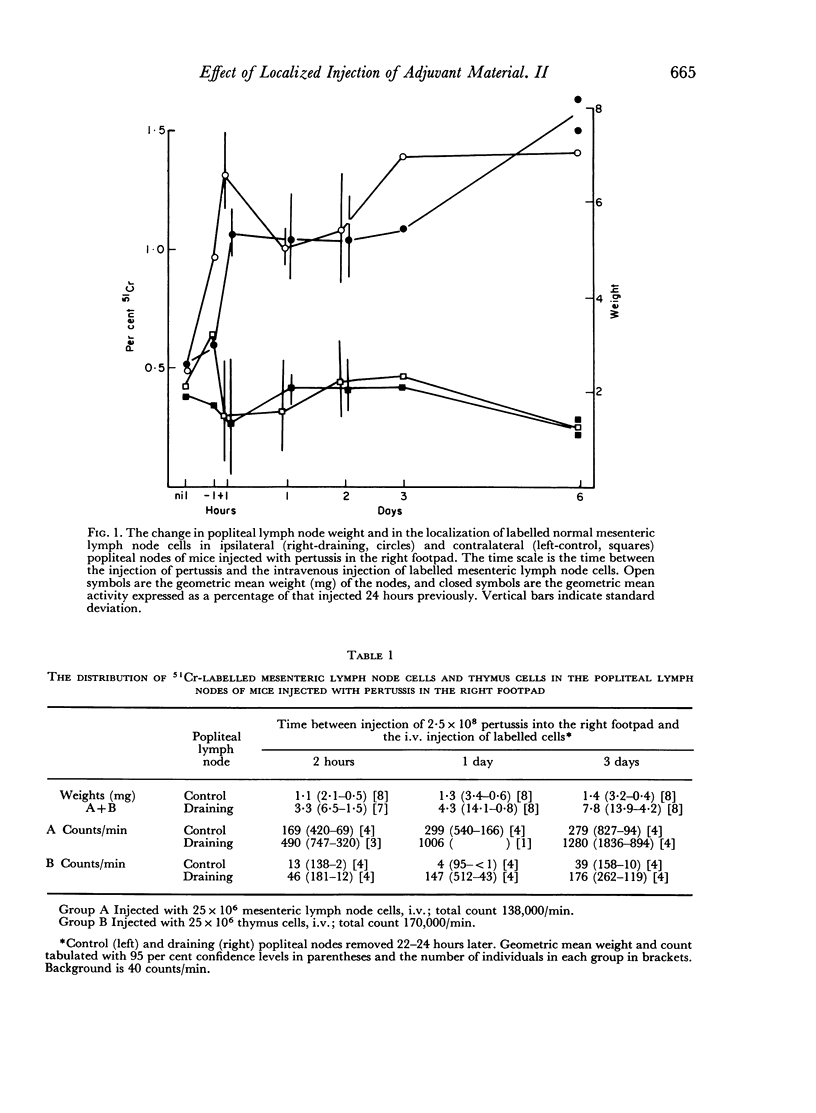
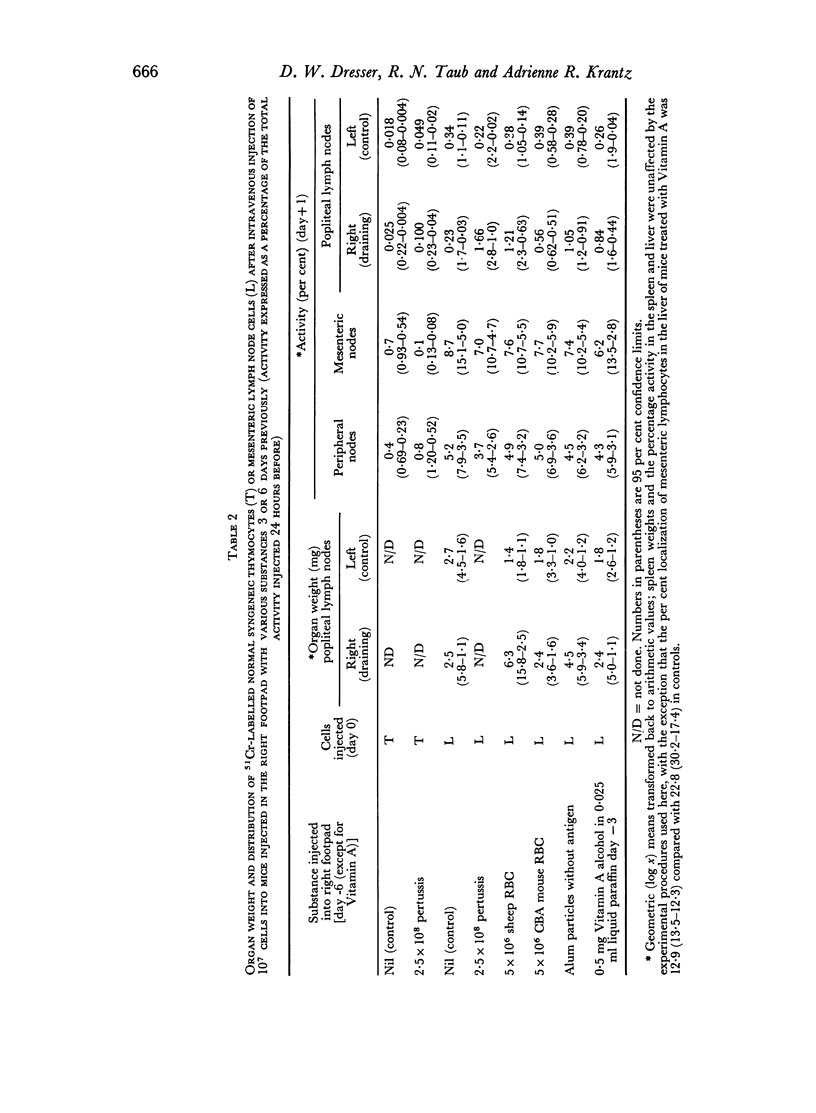
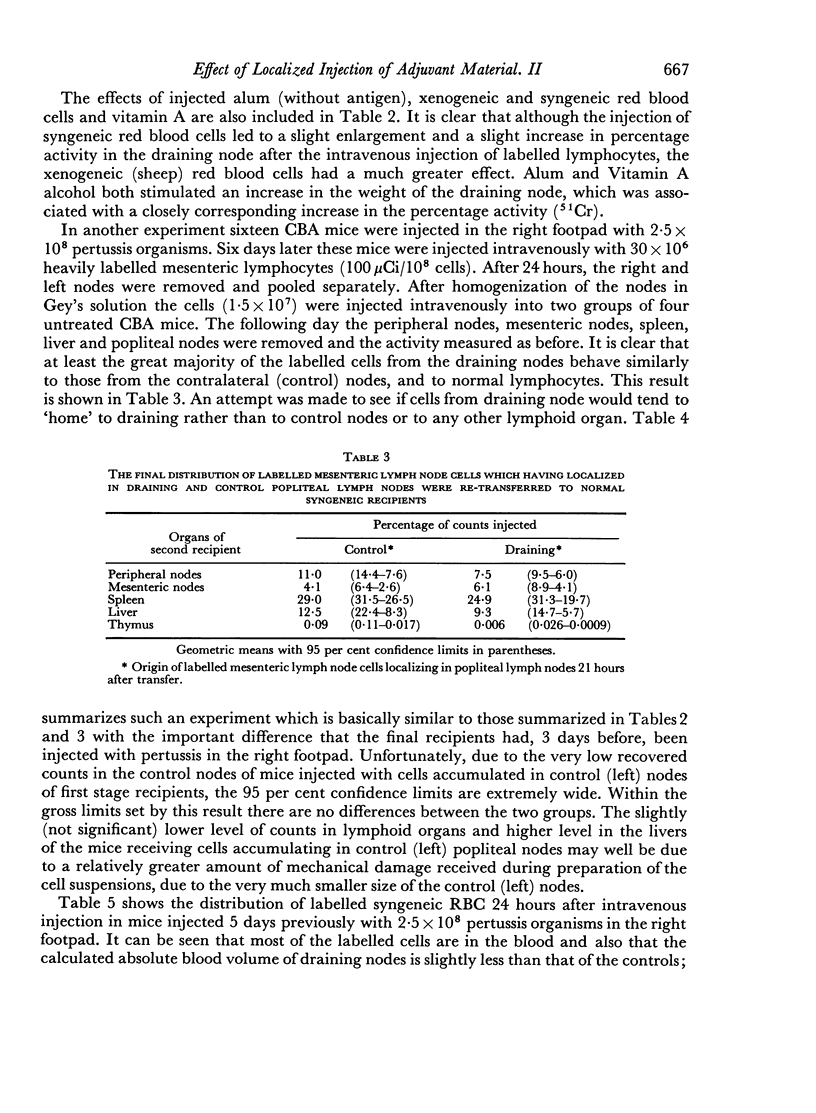
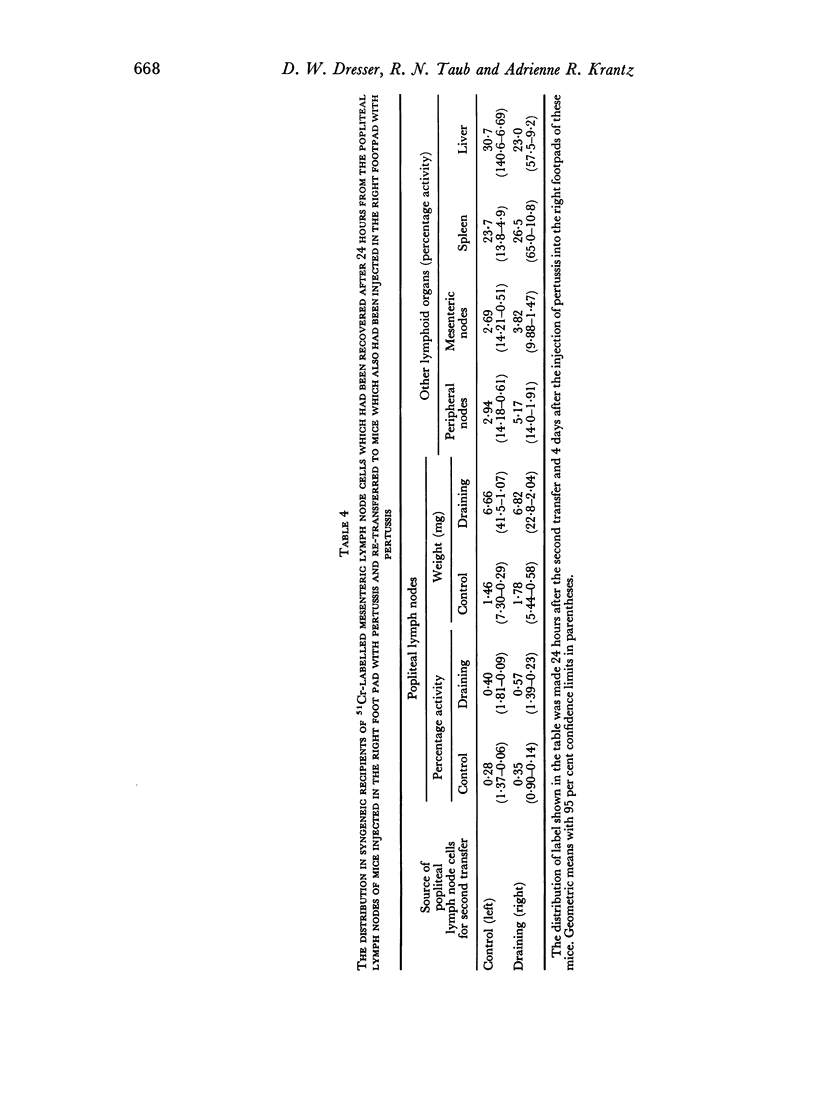
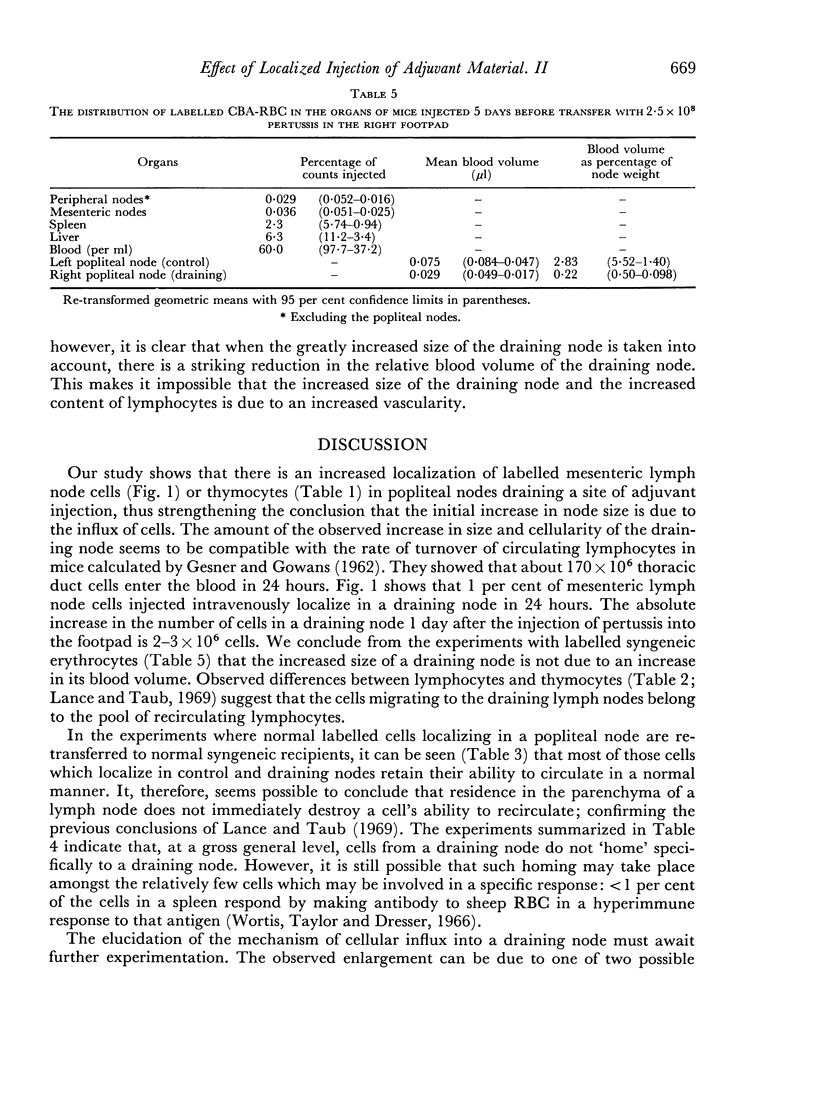
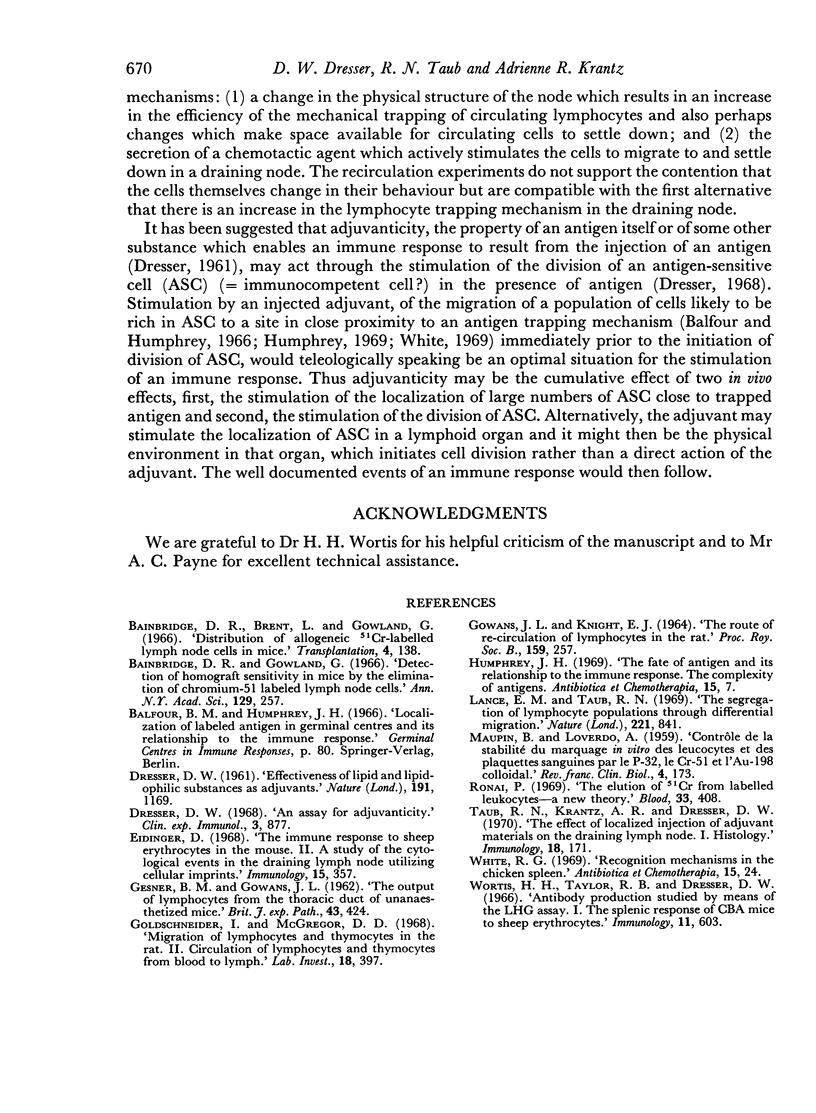
Selected References
These references are in PubMed. This may not be the complete list of references from this article.
- Bainbridge D. R., Brent L., Gowland G. Distribution of allogeneic 51Cr-labelled lymph node cells in mice. Transplantation. 1966 Mar;4(2):138–153. doi: 10.1097/00007890-196603000-00003. [DOI] [PubMed] [Google Scholar]
- DRESSER D. W. Effectiveness of lipid and lipidophilic substances as adjuvants. Nature. 1961 Sep 16;191:1169–1171. doi: 10.1038/1911169a0. [DOI] [PubMed] [Google Scholar]
- Dresser D. W. An assay for adjuvanticity. Clin Exp Immunol. 1968 Nov;3(9):877–888. [PMC free article] [PubMed] [Google Scholar]
- Eidinger D. The immune response to sheep erythrocytes in the mouse. II. A study of the cytological events in the draining lymph node utilizing cellular imprints. Immunology. 1968 Sep;15(3):357–369. [PMC free article] [PubMed] [Google Scholar]
- GESNER B. M., GOWANS J. L. The output of lymphocytes from the thoracic duct of unanaesthetized mice. Br J Exp Pathol. 1962 Aug;43:424–430. [PMC free article] [PubMed] [Google Scholar]
- GOWANS J. L., KNIGHT E. J. THE ROUTE OF RE-CIRCULATION OF LYMPHOCYTES IN THE RAT. Proc R Soc Lond B Biol Sci. 1964 Jan 14;159:257–282. doi: 10.1098/rspb.1964.0001. [DOI] [PubMed] [Google Scholar]
- Goldschneider I., McGregor D. D. Migration of lymphocytes and thymocytes in the rat. II. Circulation of lymphocytes and thymocytes from blood to lymph. Lab Invest. 1968 Apr;18(4):397–406. [PubMed] [Google Scholar]
- Humphrey J. H. The fate of antigen and its relationship to the immune response. The complexity of antigens. Antibiot Chemother. 1969;15:7–23. doi: 10.1159/000386767. [DOI] [PubMed] [Google Scholar]
- Lance E. M., Taub R. N. Segregation of lymphocyte populations through differential migration. Nature. 1969 Mar 1;221(5183):841–843. doi: 10.1038/221841a0. [DOI] [PubMed] [Google Scholar]
- MAUPIN B., LOVERDO A. Contróle de la stabilité du marquage in vitro des leucocytes et des plaquettes sanguines par le P32, le Cr51 et l'Au198 collòidal. Rev Fr Etud Clin Biol. 1959 Feb;4(2):173–177. [PubMed] [Google Scholar]
- Ronai P. M. The elution of 51Cr from labelled leukocytes--a new theory. Blood. 1969 Mar;33(3):408–413. [PubMed] [Google Scholar]
- Taub R. N., Krantz A. R., Dresser D. W. The effect of localized injection of adjuvant material on the draining lymph node. I. Histology. Immunology. 1970 Feb;18(2):171–186. [PMC free article] [PubMed] [Google Scholar]
- White R. G. Recognition mechanisms in the chicken spleen. Antibiot Chemother. 1969;15:24–39. doi: 10.1159/000386769. [DOI] [PubMed] [Google Scholar]
- Wortis H. H., Taylor R. B., Dresser D. W. Antibody production studied by means of the LHG assay. I. The splenic response of CBA mice to sheep erythrocytes. Immunology. 1966 Dec;11(6):603–616. [PMC free article] [PubMed] [Google Scholar]


